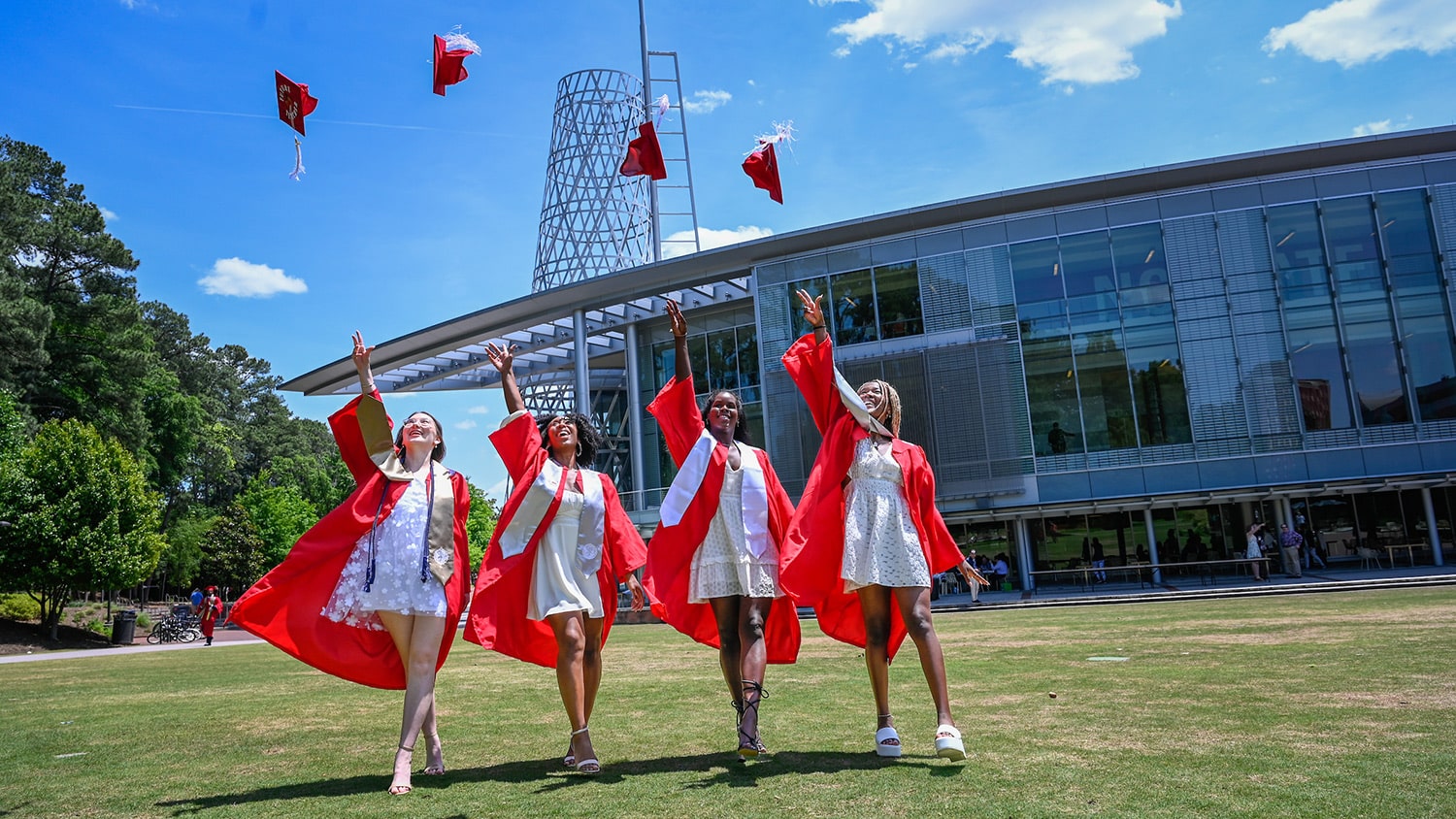NC State Welcomes New Wolfpack: Bronze Wolves Installed March 9
North Carolina State University will officially welcome a new wolfpack to campus at 2 p.m. Tuesday, March 9, with the installation of three bronze wolves on the plaza just west of the bookstore and south of the Free Expression Tunnel.
San Diego-based artist Michael Stutz created the “woven bronze” wolves that weigh in at approximately 1,200 pounds apiece and stand about five feet tall. The sculptures are part of a continuing campus beautification project helped along by the bond referendum of 2000 that allowed NC State to address facility construction and renovation across campus.
“Now we have an opportunity to turn our attention to the spaces between buildings,” said Tom Skolnicki, university landscape architect. “If you look across our campus, there are some iconic places, like the Bell Tower, the Brickyard and Holladay Hall. As part of the physical master plan, we’re trying to create additional (iconic places) as well as improve the areas that have high visibility and high pedestrian traffic.”
The area where the wolves will be located is a well-traveled part of campus, within a few yards of the Free Expression Tunnel, Talley Center, bookstore and several residence halls. The project was commissioned in 2008.
Stutz, whose art uses straps of material to create form, said he hoped to invoke “order and abstraction,” with his trio of wolves.
“When you look at the site, you see a traditional, ordered space,” he said. “You see a space where students in a literal way are moving toward their goal. They may not be completely sure of the exact nature of that goal yet, but they’re moving. It’s that moving forward idea that evokes the nature and powerful wildness you find in wolves that I was aiming for.”
Stutz said he spent “quite a bit” of time watching how the space is used before deciding on the nature and scale of the sculptures. “Students were skateboarding, playing games, studying, moving back and forth. It’s a space that is well-used and I did not want the sculptures to encroach too much on the way the space is utilized.”
Originally from Tennessee, Stutz was chosen in a process that began two years ago when 66 artists responded to requests for qualifications. A committee made up of seven faculty and staff narrowed the list to four artists who visited campus and met with faculty, staff and students. You can see an example of his work on a pedestrian bridge over Highway 1 in Cary.
-30-
- Categories:


